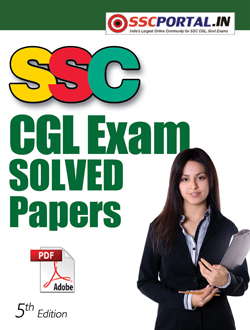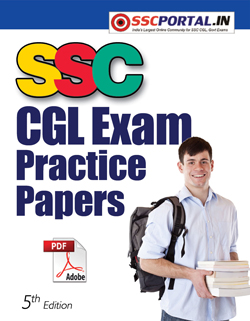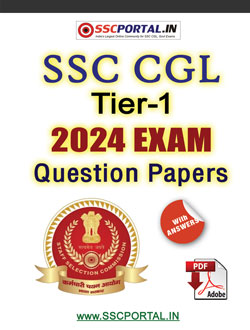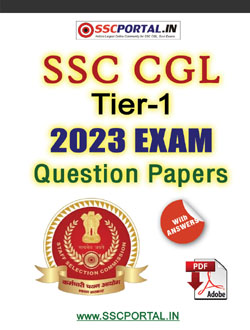NEW! SSC CGL PDF NOTES
SSC CGL MCQ : Chemistry
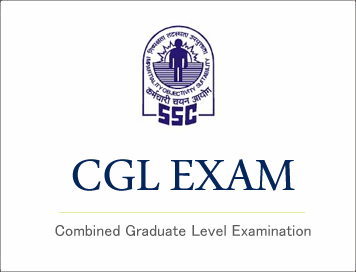
SSC CGL MCQ : Chemistry
1. The most abundant elements is:
(a) Silicon
(b) Calcium
(c) Nitrogen
(d) Oxygen
2. Bar is a unit of
(a) pressure
(b) force
(c) energy
(d) frequency
3. Oxygen and ozone are –
(a) allotropes
(b) isomers
(c) isotopes
(d) isobars
4. Who among the following proposed that atom is indivisible?
(a) Dalton
(b) Berzelius
(c) Rutherford
(d) Avogadro
5. Neutron was discovered by
(a) J. J. Thomson
(b) Chadwick
(c) Rutherford
(d) Priestley
6. The word ‘insolation’ means
(a) Matters which insulates
(b) Incoming solar radiation
(c) Insoluble matters
(d) None of the above
7. Neutrino has-
(a) charge + 1, mass 1
(b) charge 0, mass 0
(c) charge – 1, mass 1
(d) charge 0, mass 1
8. Indicate the correct arrangement for electromagnetic radiation in order of their increasing wavelength-
(a) Visible, infrared, microwave, Xrays
(b) X – rays, infrared, visible, microwave
(c) Microwave, infrared, visible, X – rays
(d) X- rays, visible, infrared, microwave
9. The photoelectric effect is described as the ejection of electrons from the surface of metal when-
(a) it is used
(b) it is placed in strong electrick field
(c) electrons of suitable velocity impinge on it
(d) Light of suitable wavelength falls on it
10. Which electro magnetic radiation is emitted by radioactive substance-
(a) Y– rays
(b) Radio waves
(c) Micro waves
(d) x – ray
11. Species containing same number of electrons are called:
(a) Isotopes
(b) Isobars
(c) Isoelectronic
(d) Isotones
12. Isobars are lines displaying areas of equal-
(a) Humidity
(b) Temperature
(c) Rainfall
(d) Atmospheric pressure
(E-Book) SSC CGL (Tier-1) Exam 2020 Solved Question Papers PDF Download
13. The phenomenon of radioactivity was discovered in 1898 A. D. by-
(a) Henri Becquerel
(b) J.J Thomson
(c)`Marie Curie
(d) Pierre Curie
14. The α – particles are-
(a) High energy electrons
(b) Positively charged hydrogen ions
(c) High energy x –ray radiations
(d) double positively charged helium nuclei
15. Heavy water is used as a coolant in nuclear reactors Heavy water is
(a) Water rich in minerals
(b) Ozonized water
(c) Water containing minerals of heavy metal
(d) Water containg heavy isotope of hydrogen
16. Gamam rays are-
(a) high energy electrons
(b) low energy electrons
(c) high energy electromagnetic
(d) high energy positions waves
17. Neclear fission is caused by the impact of –
(a) Neutrons
(b) Protons
(c) Deuteron
(d) Electron
18. Hydrogen bomb is based on the principle of –
(a) nuclear fission
(b) nuclear fusion
(c) natural radioactivity
(d) artificial radioactivity
19. In nuclear raeactors the speed of neutrons is slowed down by –
(a) heavy water
(b) ordinary water
(c) zinc rods
(d) moten caustic soda
20. In treatement of cancer, which of the following is used-
(a)131I53
(b)32P15
(c) 60CO27
(d) 2H1
21. What was the fissionable material used in the bombs dropped at Nagasaki (Japan) in the years 1945?
(a) Sodium
(b) Potassium
(c) Plutonium
(d) Uranium
22. ‘Yellow cake’ an item of smuggling across broder is-
(a) a crude form of heroin
(b) a crude form of cocaine
(c) uranium oxide
(d) unrefined gold
23. Cobalt – 60 is commonly used in radiation therapy because it emits-
(a) α – rays
(b) beta rays
(c) Gamma ray
(d) X – rays
24. H2O is liquid and H2S is a gas because-
(a) Oxygen forms stronger hydrogen bond than sulphur
(b) Oxygen is less electronegative than sulphur
(c) Atomic radius of oxygen is less than that of sulphur
(d) Atomic radius of oxygen is greater than that of sulphur
25. The acid used in eye wash is
(a) Oxalic acid
(b) nitric acid
(c) Boric acid
(d) None
26. Source of vitamin C is
(a) Nitric acid
(b) Ascorbic acid
(c) Oxalic acid
(d) Maleic acid
27. Hydrochloric acid is also known as
(a) Garlic acid
(b) Picric acid
(c) Muriatic acid
(d) Chloric acid
28. Aqua Regia contains
(a) 3 parts of conc. HCI + 1 part of con. HNO3
(b) 3 parts of conc. HCI + 1 part of con. H2SO4
(c) 3 parts of conc. H2SO4 + 1 part of con. HNO3
(d) None of these
29. Rate of diffusion of a gas is –
(a) Directly proportional to its density
(b) Directly proportional to its molecular mass
(c) Directly proportional to the square of its molecular mass
(d) Inversely propostional to the square root of its molecular mass
30. Deviations from ideal behavior will be more of the gas issubjected to-
(a) Low temperature and high pressure
(b) High temperature and low pressure
(c) Low temperature
(d) High temperature
31. An ideal gas is one which obeys-
(a) Gas laws
(b) Boyle’s laws
(c) Charle’s law
(d) Avogadro’s law
32. Alcoholic fermentation is brought about the action of –
(a) yeast
(b) CO2
(c) O2
(d) CO
33. The enzymes are killed-
(a) At a very high temperature
(b) During chemical reaction
(c) At low temperature
(d) Under atmospheric pressure
34. If a refrigerator’s door is kept open, then-
(a) Room will be cooled
(b) Room will be heated
(c) May get cooled or heated depending upon the weather
(d) No effect on room
35. When a gas is subjected to adiabatic expansion, it gets cooled due to-
(a) No chage in tntropy
(b) Loss in kinetic energy
(c) Decreases in velocity
(d) Energy spent in doing work
36. Coal gas is a mixure of-
(a) H2, CH4, CO
(b) H2, N2, CO
(c) H2, N2, O2
(d) H2, O2, CO2
37. The gas supplied in cylinders for cooking is-
(a) marsh gas
(b) LPG
(c) Mixture of CH4 and C2H6
(d) Mixture of ethane and propane
38. The most electronegative element among the following is-
(a) Chlorine
(b) Oxygen
(c) Fluorine
(d) Sodium
39. When a gas is turned into a liquid, the process is called-
(a) Condensation
(b) Evaporation
(c) Deposition
(d) Sublimation
40. The boiling point of water decreases at higher altitudes is due to
(a) Low temperature
(b) Low atmospheric pressure
(c) High temperature
(d) High atmospheric pressure
41. At high altitudes the boiling point of water lowers because-
(a) Atmoshperic pressure is low
(b) Atmospheric pressure is high
(c) Temperature is low
(d) None of these
42. In electro – refining, the pure metal is deposited on-
(a) Cathode
(b) Anode
(c) Vessel
(d) Electrolyte
43. In galvanization, iron is coated with
(a) Copper
(b) Zinc
(c) Tin
(d) Nickel
44. Smoke is a colloidal dispersion of a–
(a) Solid in a gas
(b) Liquid in a gas
(c) Gas in a solid
(d) Gas in a gas
45. When a few typical solutes are separted by aparticular selective membrane, such as protein particles from blood corpuscles, the process is called-
(a) Exosmosis
(b) Dialysis
(c) Transpiration
(d) Endosmosis
46. The bleeding of a wound is stopped by the application of ferric chloride because-
(a) Blood starts flowing in the opposite direction
(b) Ferric chloride seals the blood vessels
(c) Blood reacts and a solid is formed which seals the blood vessels
(d) Blood is coagulated and the blood vessels are sealed
47. Cod liver is an example of –
(a) Oil emulsion
(b) Oil in water emulsion
(c) Water in oil emulsion
(d) Water in water emulsion
48. Milk is an example of –
(a) oil in water emulsion
(b) Water in oil emulsion
(c) Fat in oil emulsion
(d) Fat in water emulsion
49. The blue colour of water in the sea is due to-
(a) Refraction of the blue light by the impurities in sea water
(b) Scattering of blue light by water molecules
(c) Refraction of blue sky by sea water
(d) Absorption of other colours except the blue colour by water molecules
50. Which one is an example of Miscelles System here-
(a) Soap – Water
(b) Protein + Water
(c) Rubber – Benzene
(d) All of these


